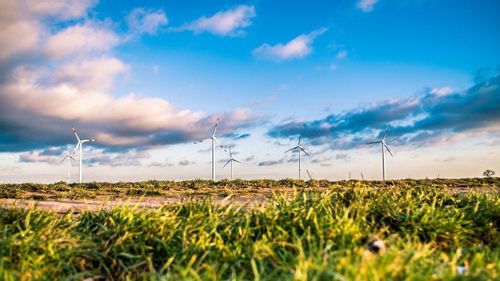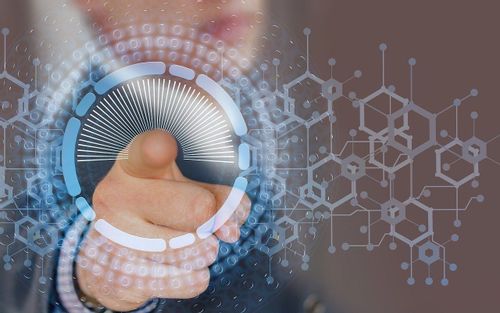Standards Packages
iTeh together with SIST has developed and compiled a comprehensive collection of standard packages to support your standard requirements. Our packages cover an array of content that includes quality management, risk management, road vehicles, machine safety, and much more. With over 200 packages to choose from, you are sure to find a collection to suit your standard needs.
Latest Standards
Within the context of the ISO/IEEE 11073 family of standards for device communication, this standard establishes a normative definition of the communication between medication monitoring devices and managers (e.g., cell phones, personal computers, personal health appliances, set top boxes) in a manner that enables plug-and-play interoperability. It leverages appropriate portions of existing standards, including ISO/IEEE 11073 terminology, information models and application profile. It specifies the use of specific term codes, formats, and behaviors in telehealth environments restricting ambiguity in base frameworks in favor of interoperability. This standard defines a common core of communication functionality for medication monitors. In this context, medication monitors are defined as devices that have the ability to determine and communicate (to a manager) measures of a user’s adherence to a medication regime.
- Standard82 pagesEnglish languagesale 10% offe-Library read for1 day
This document specifies the characteristics and the requirements of air gap with injector Family A, Type D for nominal flow velocity not exceeding 3 m/s. Air gaps are devices for protection of potable water in water installations from pollution by backflow. This document is applicable to air gaps in factory-assembled products and to constructed air gaps in situ and specifies requirements and methods to verify and ensure compliance with this document during normal working use.
The fluid in the receiving vessel is assumed to have similar properties to the water supply. Where this is not the case, additional care or tests can be required to verify the efficacy of the solution in practical use.
The AD device is intended to be used in potable water installations according to EN 806 (all parts).
- Standard13 pagesEnglish languagesale 10% offe-Library read for1 day
This standard establishes a normative definition of communication between personal health continuous glucose monitor (CGM) devices (agents) and managers (e.g., cell phones, personal computers, personal health appliances, set top boxes) in a manner that enables plug-and-play interoperability. It leverages work done in other ISO/IEEE 11073 standards including existing terminology, information profiles, application profile standards, and transport standards. It specifies the use of specific term codes, formats, and behaviors in telehealth environments, restricting optionality in base frameworks in favor of interoperability. This standard defines a common core of communication functionality of CGM devices. In this context, CGM refers to the measurement of the level of glucose in the body on a regular (typically 5 minute) basis through a sensor continuously attached to the person.
- Standard85 pagesEnglish languagesale 10% offe-Library read for1 day
IEC 60068-2-2:2025 specifies dry heat temperature tests that are applicable to non-heat-dissipating and heat-dissipating specimens, to determine the ability of components, equipment or other articles to be used, transported or stored at high temperature.
This document is applicable to energized as well as non-energized specimens that normally achieve temperature stability during the test. The specimens can be subject to test in packed condition (to simulate transportation and storage) or in unpacked condition (to simulate use).
This document does not specify tests to determine the impact of temperature changes on specimens.
This sixth edition cancels and replaces the fifth edition published in 2007. This edition constitutes a technical revision.
This edition includes the following significant technical changes with respect to the previous edition:
a) revision of the introduction and scope;
b) inclusion of new figures and symbols for clarification purposes;
c) clarification of the test procedure for ascertaining high or low air velocity in the test chamber;
d) clarification of the requirements for measuring points around, on or in specimens;
e) reintroduction of the nomogram procedure for the correction of the conditioning temperature when testing with high air velocity (Test Bd and Test Be);
f) revision of the temperature tolerances of the test;
g) revision of standardized requirements for the relevant specification and test report;
h) inclusion of the advantages and disadvantages of the testing procedures.
- Standard33 pagesEnglish languagesale 10% offe-Library read for1 day
IEC 63522-33:2025 This part of IEC 63522 is used for testing all kind of electrical relays and for evaluating their ability to perform under expected conditions of transportation, storage and all aspects of operational use.
This document provides test methods to ensure that the connection between an earthing terminal and parts required to be connected thereto is of low resistance.
- Standard10 pagesEnglish languagesale 10% offe-Library read for1 day
This document:
— specifies principle criteria and processes for FM and provides methods which enable the implementation and use of these processes within any FM organization;
— specifies criteria to support organizational decisions;
— gives guidance for developing and improving the FM processes to support and enable the function of the primary activities.
- Standard99 pagesEnglish languagesale 10% offe-Library read for1 day
This document specifies a method for measuring the thickness, length and width of test pieces of wood-based panels.
- Standard6 pagesEnglish languagesale 10% offe-Library read for1 day
This document specifies requirements for methanol bunkering transfer systems to and from inland navigation vessels. The various scenarios for the bunker facility operator concern land, truck and vessel (barge). It concerns design, dimensions and technical requirements for the transfer of methanol, including the nozzle, connection, inner and outer flanges and failsafe features.
This document also specifies the process and procedures for the bunkering operations, as well as responsibilities and risk assessment scope, taking into consideration the specific hazards in handling and bunkering methanol fuel. Next to this, the requirement for the methanol provider to provide a bunker delivery note and training and qualification of personnel involved.
This document is not applicable to cargo operations.
- Standard26 pagesEnglish languagesale 10% offe-Library read for1 day
This document is applicable to biology, chemistry and physics laboratories where research, preparative, analytical, process activities take place and which can involve work with hazardous substances, including higher education (college and university teaching and post-graduate research).
This document does not cover the requirements of schools, i.e. precollege/pre-university (refer to EN 13150), or highly specialist laboratories which need very specific, bespoke solutions to enable them to function.
This document specifies requirements for installation and design of laboratory benches, associated storage units, and for the provision and connection of services integral or delivered to the laboratory benches. This document gives guidelines for all parties involved in the planning, design, manufacture, installation, testing of a new laboratory or in the refurbishment of an existing laboratory.
For safety storage cabinets for flammable liquids EN 14470-1 and for pressurized gas cylinders EN 14470-2 applies.
- Standard39 pagesEnglish languagesale 10% offe-Library read for1 day
This document is applicable to recirculatory filtration fume cabinets (RFFC).
Recirculatory filtration fume cabinets are devices intended to protect their users by means of:
— the ability to contain hazardous concentrations or quantities of airborne contaminants;
— the ability to remove hazardous concentrations or quantities of airborne contaminants from air exhausted from inside the fume cabinet by means of filtration before the air is recirculated to the room in which the fume cabinet is located.
This document specifies design and manufacturing requirements together with type and on-site testing procedures.
This document does not specify requirements for the use of a mixture of chemicals but provides guidance on how to proceed.
NOTE For special applications and usage such as Carcinogenic, Mutagenic, Reprotoxic Substances (CMR) substances, local regulation can apply. These local regulations can result on restriction of usage.
This document is not intended to address fume cupboards, or devices used as animal accommodation. For fume cupboards, the EN 14175 series applies. For microbiological safety cabinets, EN 12469 applies.
- Standard31 pagesEnglish languagesale 10% offe-Library read for1 day
This document specifies a method for the determination of the gas-transmission rate of any plastic material in the form of film, sheeting, laminate, co-extruded material or flexible plastic-coated material. Specific examples, currently in use, of the method are described in the annexes.
- Standard15 pagesEnglish languagesale 15% off
This document specifies test methods for determining the conformance of radio frequency identification (RFID) devices (tags and interrogators) for item management with the specifications given in ISO/IEC 18000-61, ISO/IEC 18000-62 and ISO/IEC 18000-64. However, this document does not apply to the testing of conformance with regulatory or similar requirements. The test methods require only that the mandatory functions, and any optional functions which are implemented, are verified. This can, in appropriate circumstances, be supplemented by further, application-specific functionality criteria that are not available in the general case. The interrogator and tag conformance parameters in this document are the following: — type-specific conformance parameters including nominal values and tolerances; — parameters that apply directly affecting system functionality and inter-operability. Parameters that are already included in regulatory test requirements are not included in this document. Unless otherwise specified, the tests in this document are intended to be applied exclusively to RFID tags and interrogators defined in ISO/IEC 18000-61, ISO/IEC 18000-62 and ISO/IEC 18000-64.
- Standard46 pagesEnglish languagesale 15% off
This method gives a standardized procedure for the conditioning operation when selecting a conditioning product at laboratory scale and also for the production of flocculated thickened sludge for subsequent dewatering tests. This document provides a method for laboratory chemical conditioning of sludge. The method applies to sludges and suspensions from: — storm water handling; — urban wastewater collecting systems; — urban wastewater treatment plants; — industrial wastewater that has been treated similarly to urban wastewater; — water supply plants. This document is applicable to all sludge that can have similar environmental or health impacts, or both, with exclusion of hazardous sludge from industry and dredged sludge.
- Standard13 pagesEnglish languagesale 15% off
- Draft167 pagesEnglish languagesale 10% offe-Library read for1 day
This document specifies a basic measurement method by using the variable temperature sealed housing for evaporative determination (VT-SHED) test procedure for evaporative emissions from motorcycles. It is applicable to motorcycles equipped with a spark ignition engine (four-stroke engine, two-stroke engine or rotary piston engine).
- Standard20 pagesEnglish languagesale 15% off
IEC 63522-10:2025 is used for testing along with the appropriate severities and conditions for measurements and tests designed to assess the ability of DUTs to perform under expected conditions of transportation, storage and all aspects of operational use. This document defines a standard test method for heating.
- Draft13 pagesEnglish languagesale 10% offe-Library read for1 day
This document addresses the specification and demonstration of capability and system reliability to successfully deliver a medicinal product as part of design verification and manufacture, utilizing empirical methods as well as modelling. This includes risk-based techniques to establish and demonstrate the required reliability level for all disposable single use drug delivery systems (DDSs) for which there is a single opportunity to deliver a single dose of a medicinal product. DDSs covered by this document include, but are not limited to: — needle-based injection systems (ISO 11608-1); — needle-free injection systems (ISO 21649); — aerosol drug delivery systems (ISO 20072). This document does not cover: — DDSs with containers that can be replaced; — DDSs intended for dental use; — finished needles; — empty syringes; — catheters; — DDSs for multi-patient use; — pumps [IEC 60601-2-24 (if electronic) or ISO 28620 (if non-electronic)]; — stand-alone prefilled syringes defined by ISO 11040-8. In this document system reliability is limited to assessing functional performance of the DDS and does not address human factors or user interface considerations. These will be covered by a usability engineering program in accordance with IEC 62366-1. NOTE DDSs not in scope of this document can still benefit from elements in this document but provisions of this document might not completely fulfil the basic safety and effectiveness of such DDSs.
- Technical specification15 pagesEnglish languagesale 15% off
This document specifies the operating procedures for chicken slaughtering.
- Standard6 pagesEnglish languagesale 15% off
IEC 63522-1:2025 is used for testing along with the appropriate severities and conditions for measurements and tests designed to assess the ability of specimens to perform under expected conditions of transportation, storage, and all aspects of operational use. The object of this test is to define a standard test method for the visual inspection and check of dimensions.
- Draft10 pagesEnglish languagesale 10% offe-Library read for1 day
This document specifies particular requirements for portable units which are part of a transportable liquid oxygen system and used to provide a controlled flow of oxygen for inhalation by the patient in the home-care environment. Portable units are intended to be used without professional supervision, carried by patients while moving around and during their off-site activities and refilled from a base unit via a transfilling device through the portable unit’s filling port connector. NOTE Requirements that are common to both portable units and base units are specified in ISO 18777-1.
- Standard6 pagesEnglish languagesale 15% off
- Standard6 pagesFrench languagesale 15% off
Benefits

Full Standards Solution
Our catalog includes not only latest standards but also full meta information about related standardization project lifecycle.

Cost Effective
Our PRICE MATCH GUARANTEE policy with multi-level volume discounts gives our clients the best option in the market. In addition, you can get access to the standards for 3, 10, or 30 days.

Stay Notified
Get alerted to the latest revisions and new standards in the Weekly Newsletter. Standards are constantly changing. Don’t miss a revision that can impact your business.
About Us
iTeh Inc is a software development and IT consulting team of professionals who provide consulting, development and implementation of solutions for all types of businesses.
In cooperation, with the Slovenian Institute of Standardization (SIST), we create a unique solution that covers all aspects of the lifecycle of Standardization organizations. iTeh Standards is a part of the solution that helps SIST to provide and sell their products to Customers.
iTeh Standards Store is an evolving project, our goal is to build long-term relationships with our customers. We believe in delivering quality services to solve our customers' challenges and define success by exceeding our customers' expectations. We are always ready to listen and our experience allows us to provide our customers with helpful effective suggestions. You can contact us by email.
We are committed to providing the best possible experience for our customers.
Compliance with international standards is increasingly becoming one of the key competitive advantages in the global market. Our company creates all conditions for the most comfortable implementation of new documents and norms in the processes carried out by your organization. Some of the key advantages of working with us are:
- Cost-effective - multi-level discounts and permanent updates of the functions give our clients the best option on the market.
- e-Library - access to standards for a period of time of your choice. It is a cost-effective solution for keeping updated with the newest standards.
- Company-wide documents - create a company account and connect all employees with access to purchased standards, e-Library documents, and packages.
- All in one spot - all purchased standards are kept in one place with controlled access by the account administrator.
- Client-centric - providing quality consulting is the prerogative and incentive to create new products that accompany your success and scale.
- 24 / 7 client support
We are dedicated to building mutually beneficial and long-term relationships with our clients. That is why our team focuses on creating services to help our customers develop and achieve new productive results.
























